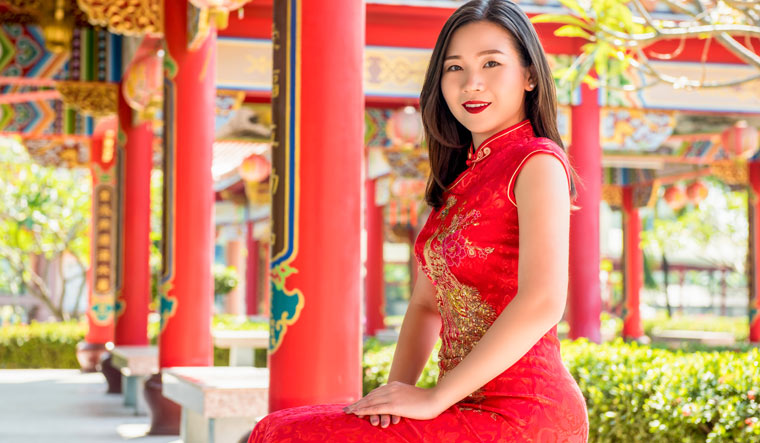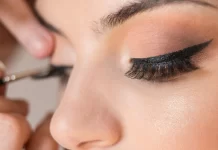When I got off the plane in Hong Kong two months ago, I noticed two very elegantly dressed stewardesses at the airport walking towards their gate in a classic traditional dress.
In the course of time, the memorable and conspicuous cut came into my field of vision more and more often and I wondered what this obviously Asian piece of clothing was all about.
We’re talking about Qipao, also called Cheongsam, which is performed in the Chinese tradition at various festivities. It means “long dress” and is characterized by its high, tightly closed collar, which is decorated with decorative buttons and loop fasteners.
The special feature of the Qipao is that it flatters every female silhouette if it was made correctly in length and cut. The button placket on the side, which closes the dress in the traditional way, allows the natural movements of the wearer and thus adapts to the body.
The choice of fabric also plays an important role in Qipao. The play of patterns and different materials changes the look of the garment. Silk, for example, can give the body more dimension with its slight shimmer and thus emphasize the feminine curves.
But where does the Chinese clothing tradition have its roots? The Qipao was originally designed as a piece of clothing for men and women and was supposed to largely conceal the female silhouette through its formerly box-like, high-necked cut. (alprazolam) The tubular cut is the forerunner of today’s Qipao and is based on a legend from the early 17th century.
In the course of time, the Qipao developed into a garment for special occasions and became more and more popular due to its universality. In the 1920s the dress began to become a source of inspiration for many international designers so that the trend of Qipao grew beyond the borders of China.
Although the cut of the collar remained the same and the Qipao became more and more adapted to the natural body shapes, the traditional cut allows many variations.
The dress has a leg slit, which is held higher or lower depending on the occasion and stretches the legs optically.
Of course, the length of the dress is now also played with, but for traditional events it is advisable to choose a dress that reaches at least up to the knee. What is certain is that since the 1930s Qipao has been a dress for every woman who wants to embody dignity and sophistication.
If you keep your eyes open in Hong Kong, you will encounter many variations of Qipao. The silky shine and the high collar seem to be especially popular, as can often be seen in the work clothes of hotel employees, service staff or stewardesses. These features are involuntarily associated with the elegance and classicism of Chinese tradition.
If you want to integrate Chinese tradition into your wardrobe, Hong Kong offers a variety of possibilities. A beautiful variant for everyday life is a Qipao style blouse, which consists of the upper part of the dress and has the classic stand-up collar. This is e.g. available at G.O.D. in SoHo.
The prices vary depending on the material and start at approx. 500 HK$.
If a festive occasion is imminent, it is worthwhile to slip into a Qipao yourself. At Shanghai Tang, you will find beautiful, classic models in an upscale price range.
But also in the Western Market, you will find what you are looking for, or in the Ngong Ping Village.
The prices there go from HK$ 1,000 upwards and fitting of various materials and cuts can be wonderfully combined with a visit to the Big Buddha.
Cheap off-the-peg Qipaos or tailors are available at the Luohu Shopping Mall in Shenzhen.



















